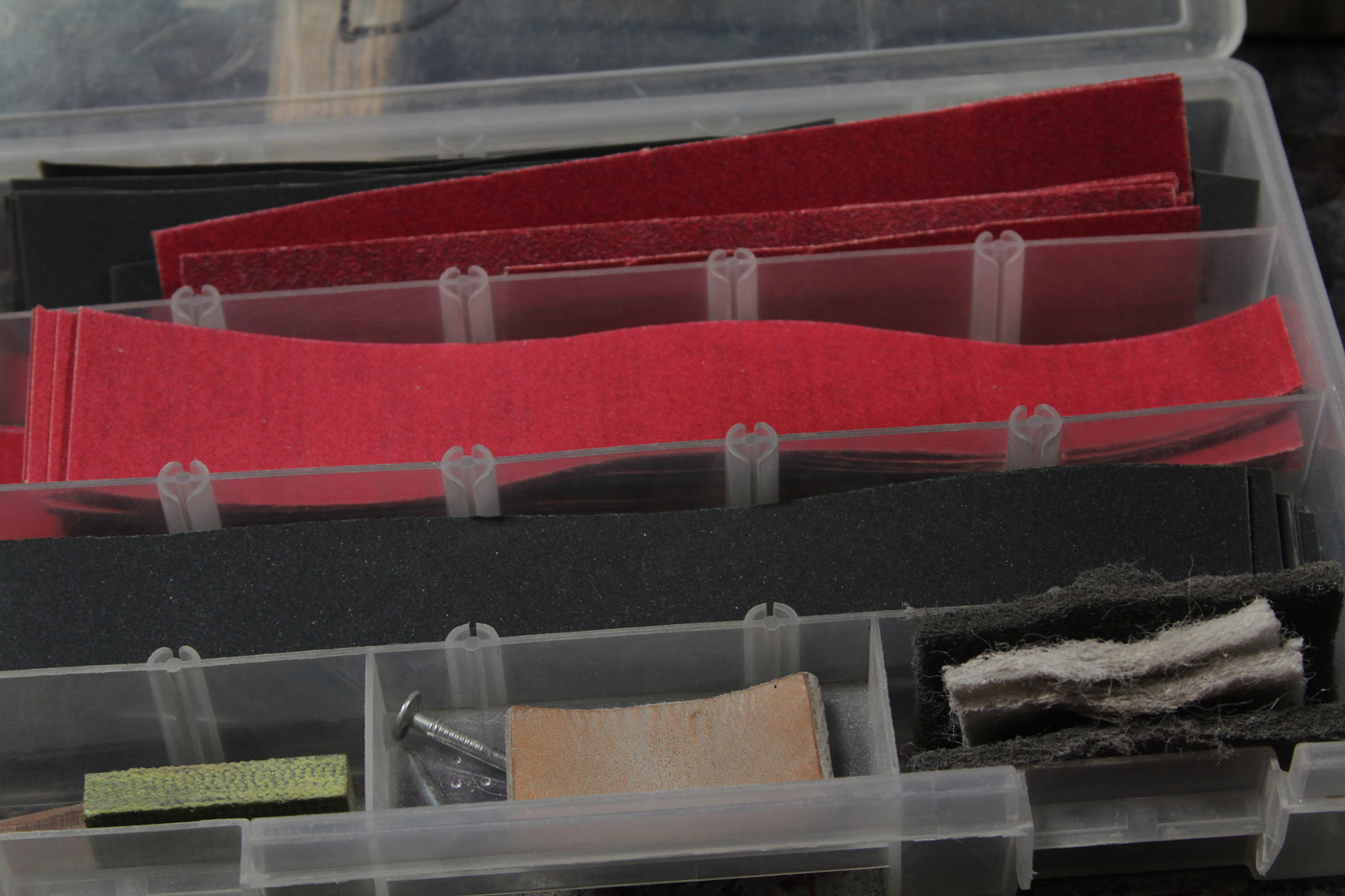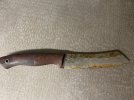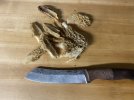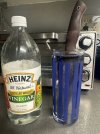Tim the Wizard
Street Samurai
- Joined
- Apr 21, 2012
- Messages
- 3,787
Knife Tip Field Repair, Part II
If you had more time, you could select a more acute angle to grind on the spine. The goal here is to match the curve of the spine on the whole knife to the curve of the spine at the tip.
To do so, you will need to grind further down on the spine. This one takes a bit of care, as you will want to remove as little metal as possible. If you begin here, the tip will be the last thing you are repairing with the stone, with most of your effort going to restoring the curve of the spine down to the tip.
On the KE Bushie, a drop point knife, the angle of the spine has a curve, therefore your motion on the stone will also curve. Pull a portion of the spine on the stone towards you, grinding it, and then lift the handle up as you approach the tip, near your original fix (or the unfixed broken tip), to create a sloping angle. Then push it along the stone in reverse, using a back and forth, up and down motion.
For many knives, only the pulling motion should be used. Avoid resistance against the stone. Go slow. Inspect every few passes.
After a few minutes, you will have something similar to this:

Metal has been ground off the spine so that the angle of the tip repair matches the sloping angle of the spine and the original grind of the knife.
To remove grind marks from the spine that you have worked on, simply strop the entire spine with black compound, along the slope of the spine, until the finishes match.
If you had more time, you could select a more acute angle to grind on the spine. The goal here is to match the curve of the spine on the whole knife to the curve of the spine at the tip.
To do so, you will need to grind further down on the spine. This one takes a bit of care, as you will want to remove as little metal as possible. If you begin here, the tip will be the last thing you are repairing with the stone, with most of your effort going to restoring the curve of the spine down to the tip.
On the KE Bushie, a drop point knife, the angle of the spine has a curve, therefore your motion on the stone will also curve. Pull a portion of the spine on the stone towards you, grinding it, and then lift the handle up as you approach the tip, near your original fix (or the unfixed broken tip), to create a sloping angle. Then push it along the stone in reverse, using a back and forth, up and down motion.
For many knives, only the pulling motion should be used. Avoid resistance against the stone. Go slow. Inspect every few passes.
After a few minutes, you will have something similar to this:

Metal has been ground off the spine so that the angle of the tip repair matches the sloping angle of the spine and the original grind of the knife.
To remove grind marks from the spine that you have worked on, simply strop the entire spine with black compound, along the slope of the spine, until the finishes match.
Last edited:






